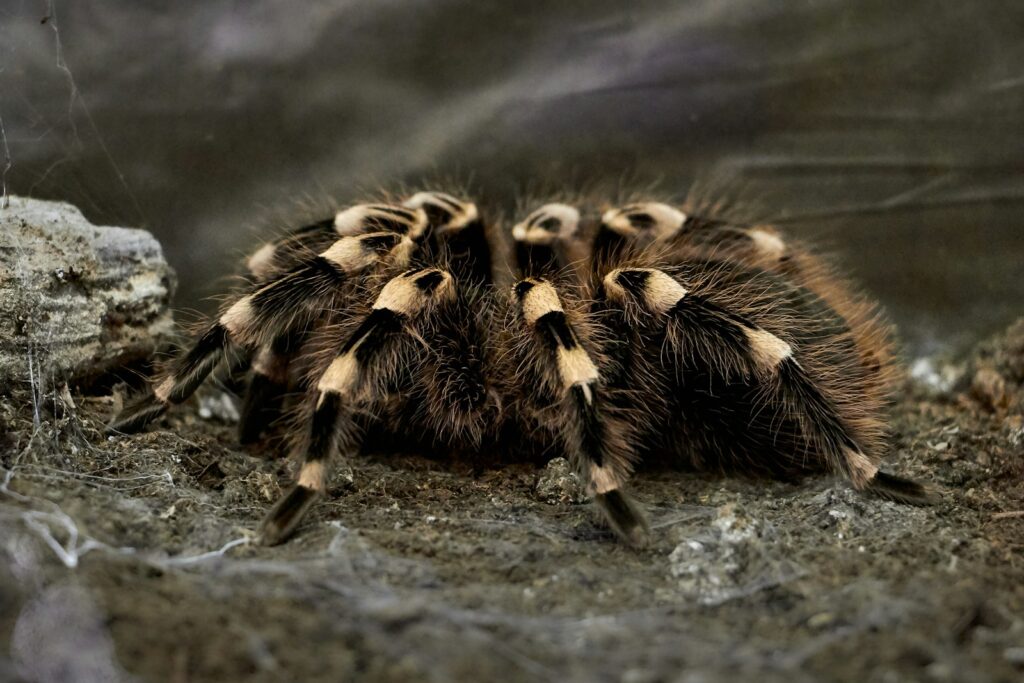Keeping exotic pets like tarantulas, reptiles, and amphibians requires specialized knowledge, particularly when it comes to their nutrition. Unlike traditional pets that thrive on commercial kibble, exotic pets often require live prey that mimics their natural diets. Feeder insects form the cornerstone of nutrition for these fascinating creatures, providing not only sustenance but also mental stimulation through hunting behaviors. Understanding which feeder insects offer the best nutritional profiles, convenience, and safety can significantly impact your pet’s health, longevity, and quality of life. This comprehensive guide explores the optimal feeder insects for tarantulas and other exotic pets, offering insights into their benefits, potential drawbacks, and proper preparation techniques.
Understanding Nutritional Requirements of Exotic Pets

Before selecting feeder insects, it’s crucial to understand your exotic pet’s specific nutritional needs. Tarantulas, for instance, are primarily insectivorous, requiring a diet rich in protein with varying nutritional profiles depending on their life stage and species. Reptiles like bearded dragons often need a balance of protein from insects and plant matter, while certain amphibians might require smaller, softer-bodied prey. The calcium-to-phosphorus ratio is particularly important for reptiles and amphibians, as imbalances can lead to metabolic bone disease and other health issues. Species-specific research is essential, as dietary requirements can vary dramatically even between closely related species—what’s optimal for a desert-dwelling tarantula may be inadequate for a tropical species.
Crickets: The Staple Feeder Insect
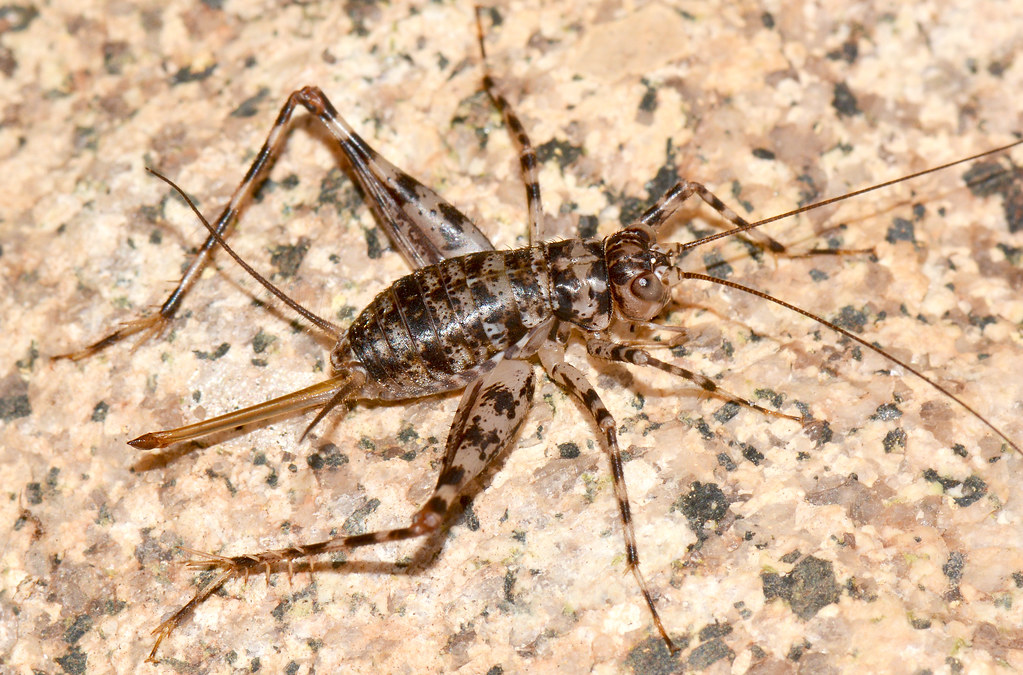
Crickets remain the most widely used feeder insect in the exotic pet hobby, serving as a dietary cornerstone for everything from tarantulas to leopard geckos. Their popularity stems from their wide availability, relatively balanced nutritional profile, and the stimulating movement that triggers feeding responses in predatory pets. They contain approximately 21% protein and are easily gut-loaded (fed nutritious foods that ultimately benefit your pet) with vegetables, fruits, and commercial cricket diets to enhance their nutritional value. However, crickets are not without drawbacks—they can be noisy, have a distinctive odor, may bite weakened or molting invertebrates, and can carry parasites if sourced from low-quality suppliers. Despite these challenges, their nutritional versatility and availability make them a reliable staple for most insectivorous exotic pets.
Dubia Roaches: The Nutritional Powerhouse
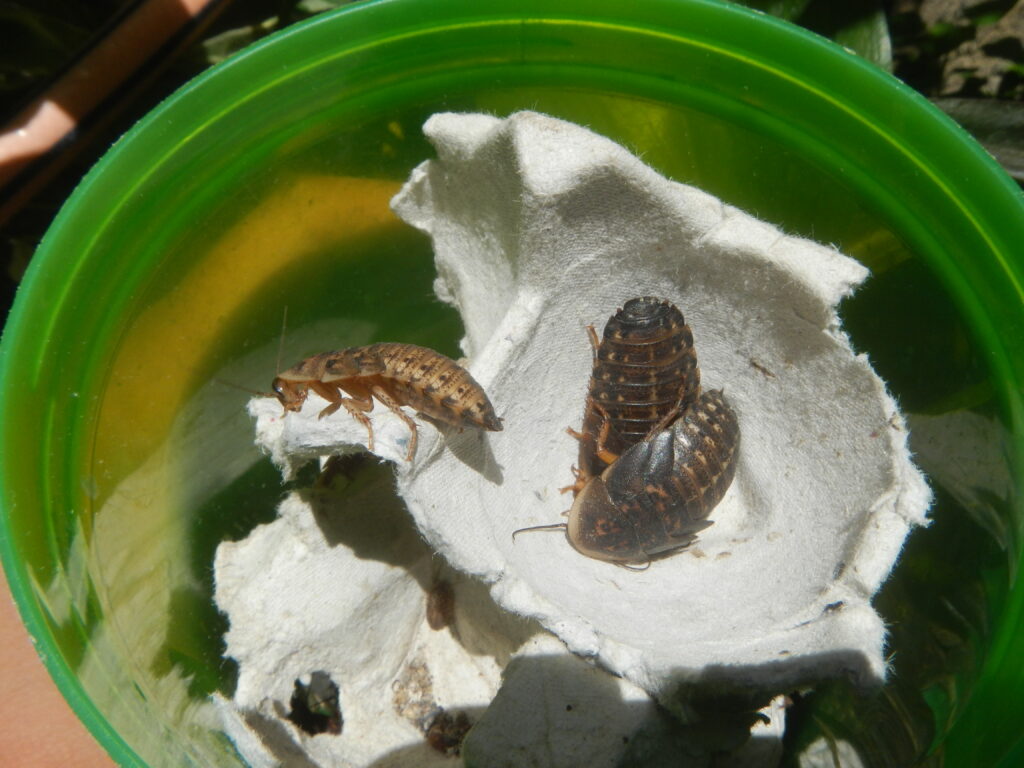
Dubia roaches (Blaptica dubia) have gained tremendous popularity among exotic pet keepers for their exceptional nutritional profile, containing up to 35% protein and an ideal calcium-to-phosphorus ratio compared to many other feeder insects. Unlike common household pest roaches, Dubias are clean, nearly odorless, and cannot climb smooth surfaces or fly, making them easier to contain than crickets. Their hardy nature means they live longer than crickets, reducing the frequency of purchases, and they’re available in various sizes to accommodate different pet species from juvenile tarantulas to adult bearded dragons. Dubia roaches are particularly valuable for reptiles requiring higher protein intake and are easily gut-loaded to further enhance their nutritional value. For keepers concerned about escapees or those living in apartments, these quiet, non-invasive feeders offer significant advantages over traditional cricket colonies.
Mealworms: Convenience and Limitations
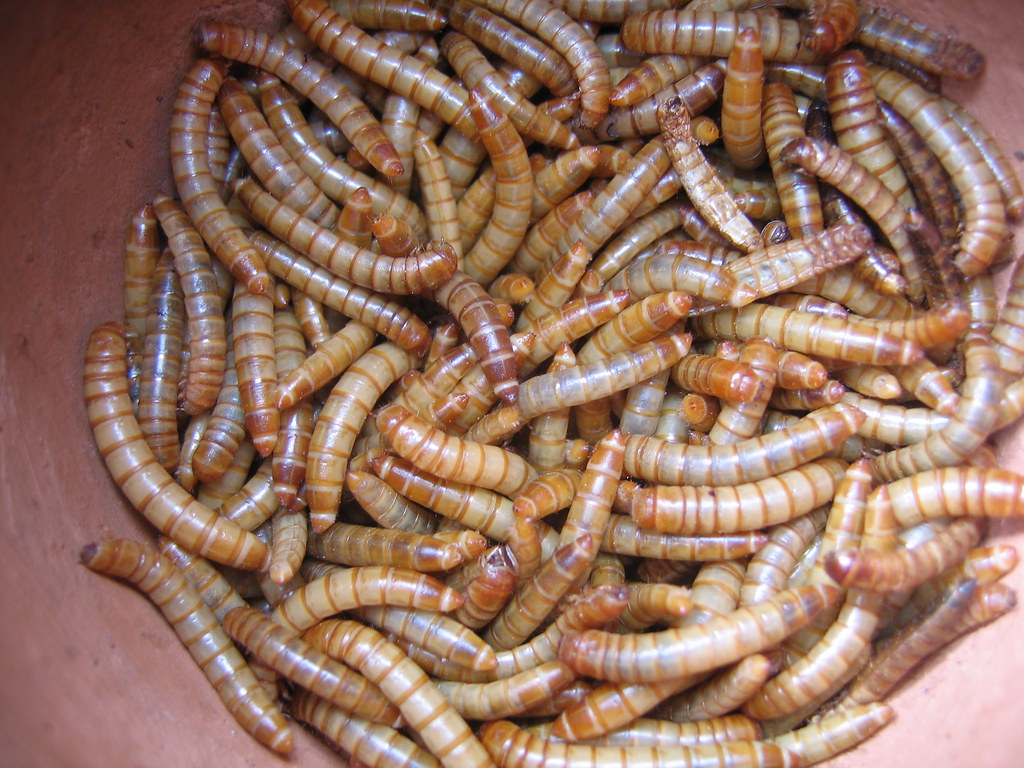
Mealworms, the larval stage of the darkling beetle (Tenebrio molitor), represent one of the most convenient feeder options for exotic pet owners. Their hardy nature allows them to be refrigerated for weeks, providing an “on-demand” food source without the maintenance of live colonies. Nutritionally, mealworms offer approximately 20% protein but have a significant drawback—their exoskeletons contain high levels of chitin and a poor calcium-to-phosphorus ratio, potentially contributing to nutritional imbalances if fed exclusively. For tarantulas, occasional mealworms pose few problems, but reptile keepers should be cautious about overreliance on these feeders without proper supplementation. Some exotic pets, particularly certain amphibians and juvenile invertebrates, may struggle to digest the hard exoskeletons, making mealworms better suited for adult specimens. Despite these limitations, their convenience and shelf stability make them a valuable part of a varied feeding rotation rather than a staple diet component.
Superworms: Size and Cautions
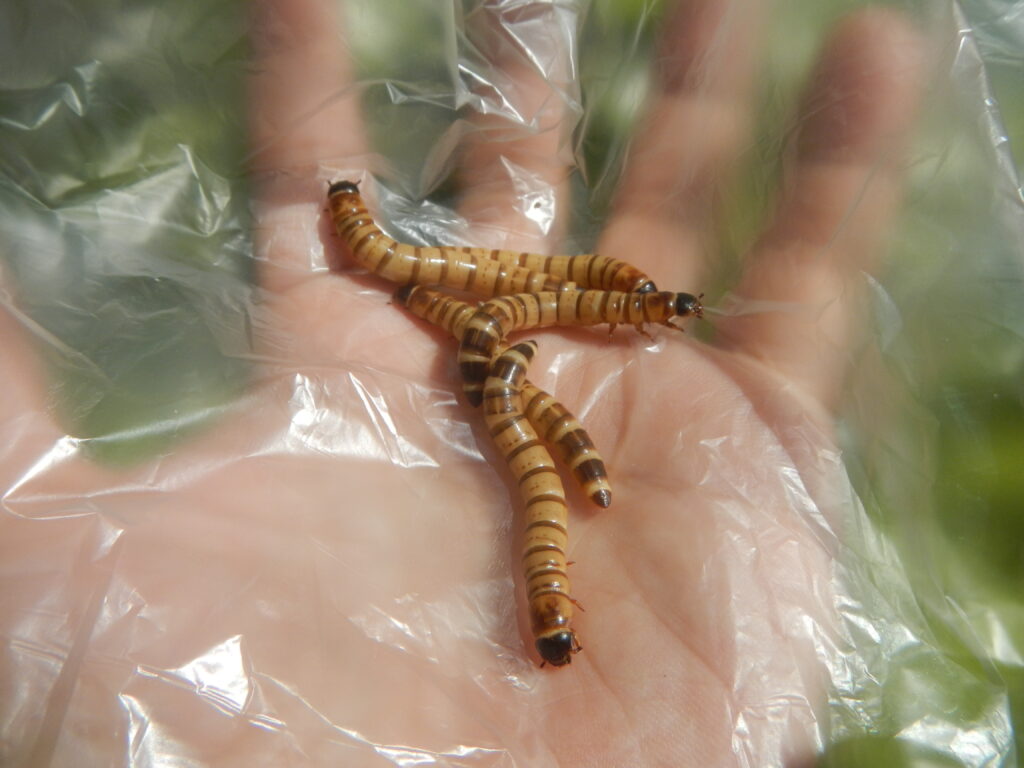
Superworms (Zophobas morio), often mistaken for larger mealworms, are actually a different species with distinct characteristics that make them suitable for specific feeding scenarios. Their substantial size—reaching up to 2 inches—makes them ideal for larger tarantulas, adult bearded dragons, and other medium to large reptiles that require more substantial prey items. Nutritionally, they offer about 19% protein with a higher fat content than regular mealworms, making them an energy-dense food source for breeding animals or those needing to gain weight. However, superworms possess powerful mandibles capable of injuring molting tarantulas or soft-bodied invertebrates, so many keepers crush the head before offering them to vulnerable pets. Unlike mealworms, superworms cannot be refrigerated for extended periods without perishing, requiring room temperature storage and regular feeding to maintain colonies. Their thick exoskeleton also presents digestibility concerns similar to mealworms, making them better as occasional treats rather than dietary staples for most exotic pets.
Fruit Flies: Perfect for Micro Fauna
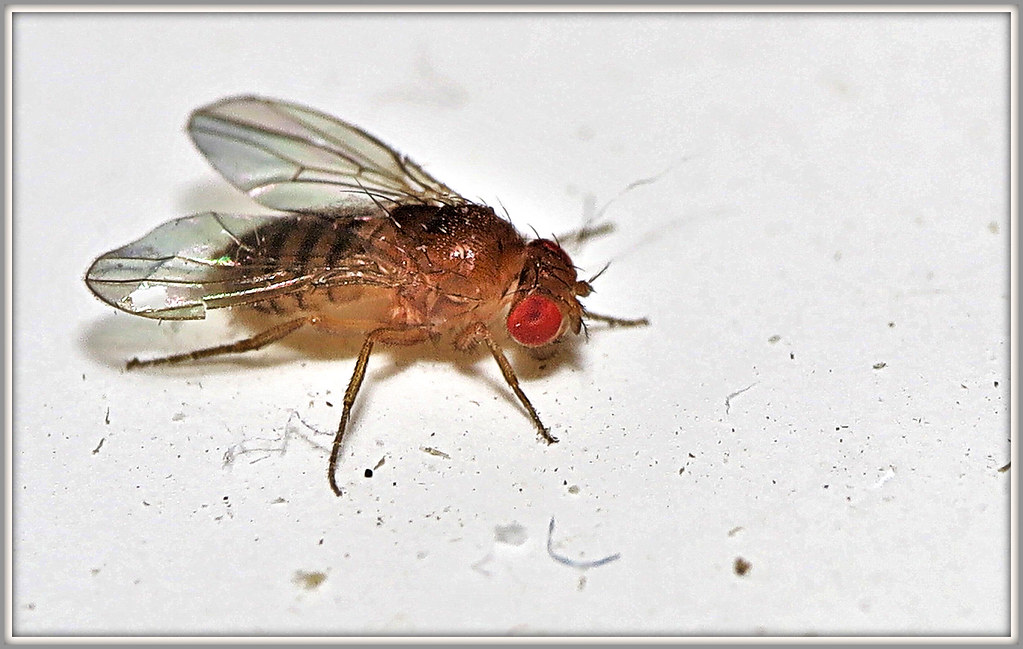
Fruit flies, particularly flightless varieties like Drosophila melanogaster (small) and Drosophila hydei (larger), serve as essential feeders for the smallest exotic pets in the hobby. These tiny insects are indispensable for raising spiderlings, mantis nymphs, dart frogs, and juvenile amphibians that cannot handle larger prey items. Culturing fruit flies at home is relatively simple and cost-effective, requiring only plastic containers, specialized medium, and excelsior or coffee filters for climbing surfaces. Nutritionally, while not as protein-rich as larger feeders, fruit flies can be dusted with calcium and vitamin supplements or fed specialized diets to improve their nutritional profile before being offered to pets. Their constant movement stimulates natural hunting behaviors in predators, and their soft bodies make them easily digestible for delicate juvenile specimens. For keepers maintaining breeding projects or collections of miniature species, maintaining several fruit fly cultures in rotation ensures a constant supply of appropriately-sized nutrition.
Silkworms: Premium Nutrition for Reptiles

Silkworms (Bombyx mori) represent one of the nutritional gold standards in the feeder insect world, particularly for reptiles requiring premium nutrition during growth, breeding, or recovery periods. These soft-bodied larvae boast an impressive nutritional profile with approximately 64% protein, one of the highest among common feeder insects, and an excellent calcium-to-phosphorus ratio that reduces the need for supplementation. Their lack of chitin makes silkworms highly digestible, reducing impaction risks for sensitive species like leopard geckos and young bearded dragons. However, silkworms require specialized care, feeding exclusively on mulberry leaves or commercial silkworm chow, making them more challenging and expensive to maintain than hardier feeders. For tarantula keepers, silkworms offer less benefit given arachnids’ different nutritional requirements, but for reptile enthusiasts seeking growth-promoting, easily digestible feeders without nutritional drawbacks, the investment in silkworms often pays dividends in animal health.
Black Soldier Fly Larvae: Calcium-Rich Option
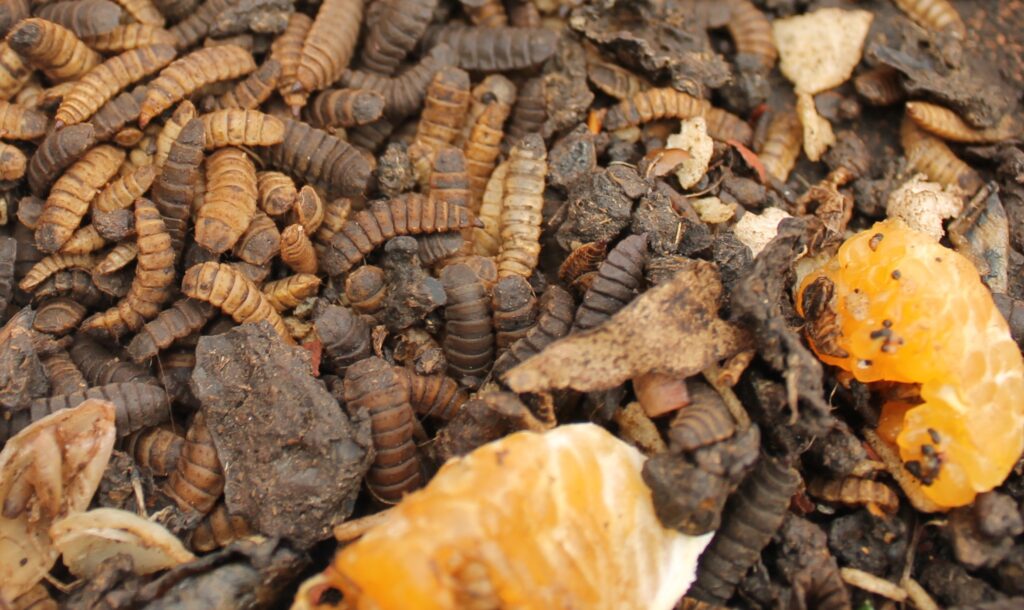
Black Soldier Fly Larvae (BSFL), often sold under brand names like “Phoenix Worms” or “Calciworms,” have revolutionized reptile nutrition by providing a rare self-containing calcium source. Unlike most feeder insects that require dusting with calcium powder, BSFL naturally contain high calcium levels due to their unique calcium carbonate-rich gut contents, offering an impressive calcium-to-phosphorus ratio between 1.5:1 and 2.5:1. This natural calcium content makes them particularly valuable for growing reptiles, egg-laying females, and species prone to metabolic bone disease. Their soft bodies are easily digestible even for juvenile animals, and their self-cleaning nature means they produce minimal waste in their containers. For tarantula keepers, BSFL represent a convenient, mess-free feeder option that doesn’t require the noise and odor management of cricket colonies. While typically smaller than mature superworms or roaches, their exceptional nutritional profile makes them worth incorporating into feeding rotations for nearly all insectivorous exotic pets.
Hornworms: Hydration and Growth Boosters
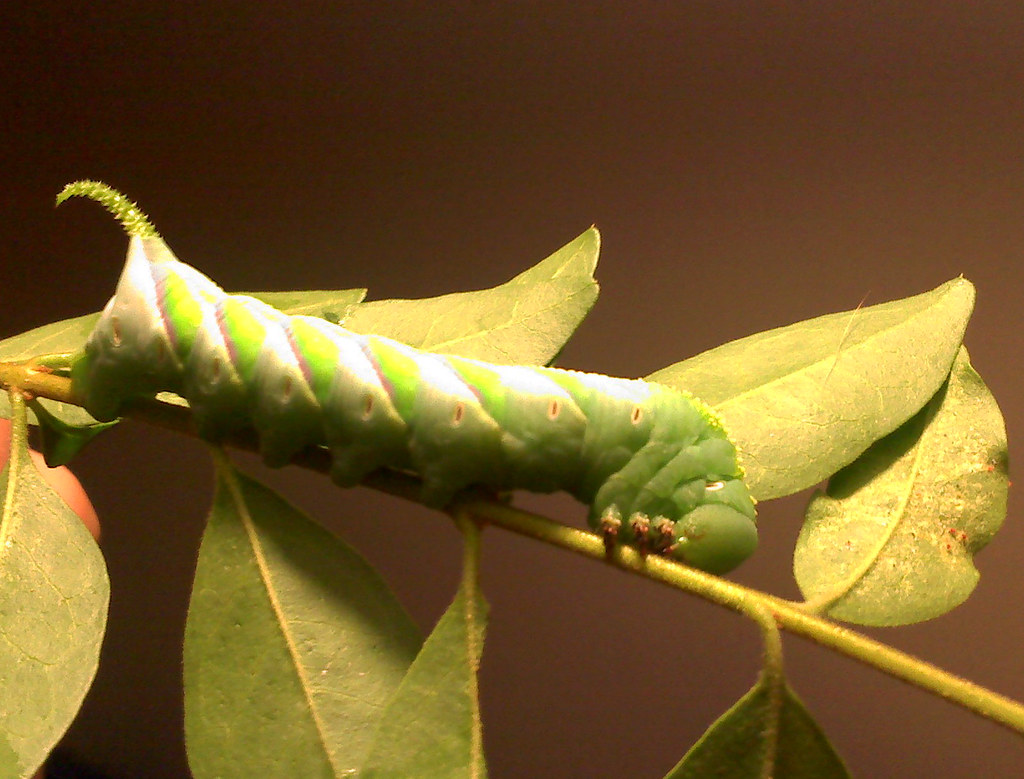
Hornworms (Manduca sexta), the striking blue-green caterpillars of the sphinx moth, offer unique benefits among feeder insects, particularly for reptile species from arid environments that may struggle with hydration. Consisting of over 85% water, these soft-bodied larvae serve as living water sources while still providing protein and essential nutrients, making them valuable during shedding periods or for chronically dehydrated animals. Their rapid growth rate—potentially increasing in size from 1 inch to 4 inches in just two weeks—requires careful planning, as they can quickly outgrow the appropriate size for smaller pets. Hornworms contain moderate protein levels (approximately 9%) and very low fat, making them excellent for obese reptiles on restricted diets needing voluminous but calorie-controlled feeding. For tarantulas, hornworms can provide hydration benefits but are generally more valuable to reptile keepers, particularly those maintaining desert species like bearded dragons where their moisture content supports proper shedding and kidney function.
Waxworms: High-Energy Treats
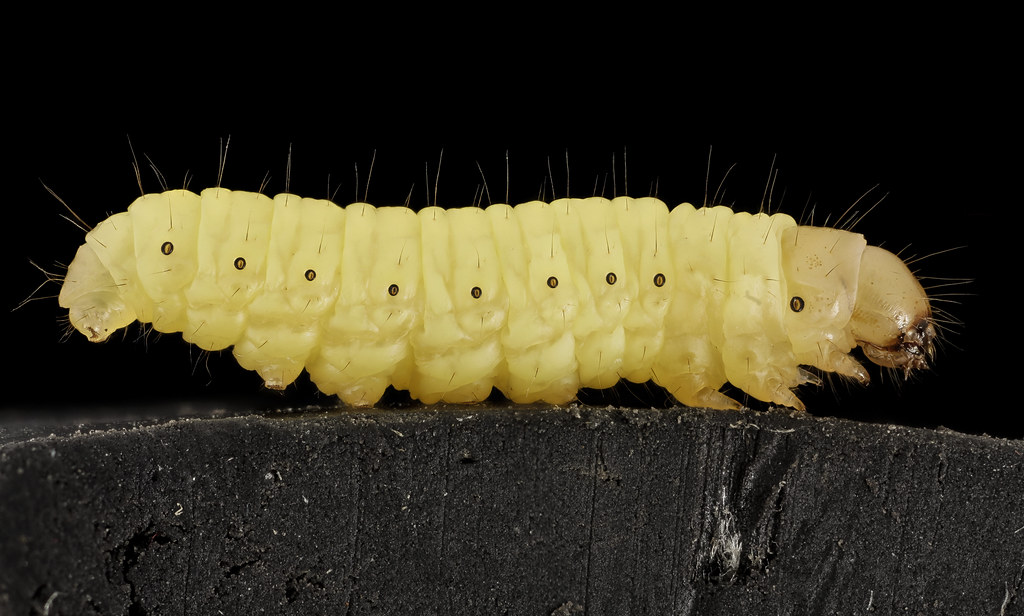
Waxworms, the larvae of the greater wax moth (Galleria mellonella), serve a specialized role in exotic pet nutrition as high-energy, high-fat treats rather than dietary staples. With fat content reaching up to 50%, these soft-bodied larvae provide caloric density that makes them ideal for animals needing weight gain, recovering from illness, or breeding females requiring extra energy reserves. Their soft bodies and relatively small size make them appropriate for smaller tarantulas and reptiles that might struggle with harder-shelled feeders. However, this high fat content becomes problematic when waxworms are overused, potentially leading to obesity and associated health problems in reptiles and some invertebrates. Many exotic pets develop strong preferences for these fatty treats, sometimes refusing healthier staple foods after regular waxworm feeding—a phenomenon reptile keepers call “waxworm addiction.” For responsible keepers, waxworms should remain an occasional indulgence (1-2 times monthly) rather than regular dietary components, particularly for species prone to obesity like leopard geckos.
Gut-Loading: Enhancing Feeder Nutritional Value
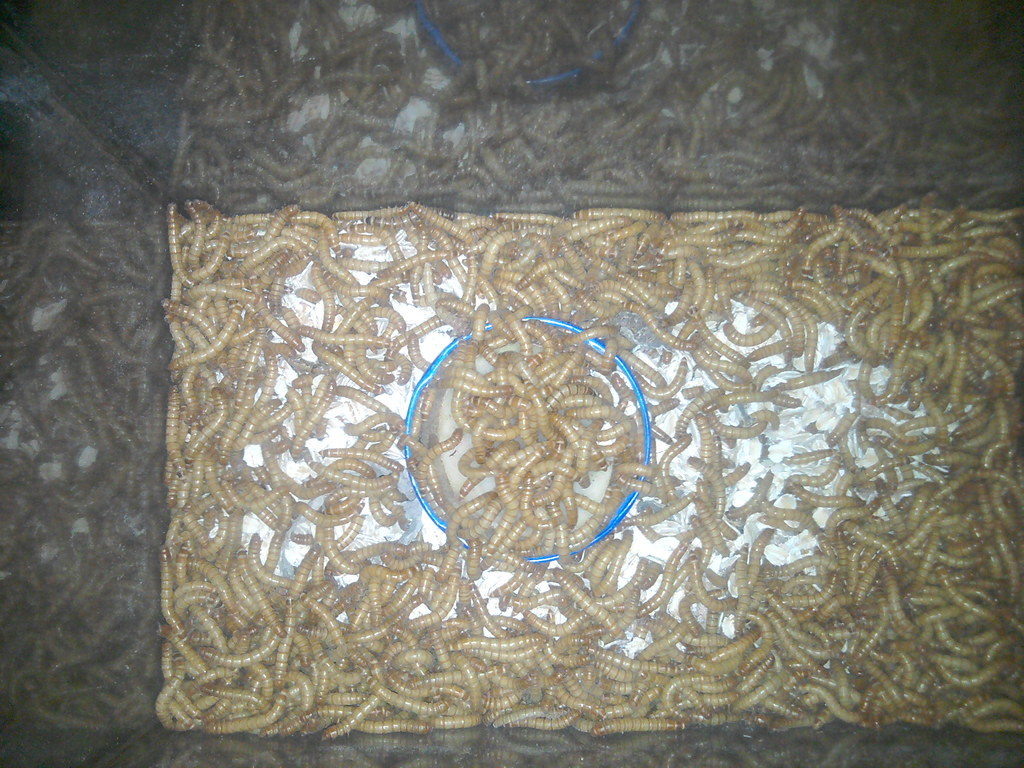
Gut-loading—the practice of feeding nutritious foods to feeder insects 24-48 hours before offering them to pets—represents one of the most important techniques for maximizing the nutritional value of live prey. This process essentially uses the feeder insect as a delivery system for nutrients, vitamins, and minerals that might otherwise be lacking in their natural composition. Effective gut-loading ingredients include calcium-rich vegetables like collard greens and dandelion greens, beta-carotene sources like carrots and sweet potatoes, and commercial gut-loading formulas specifically designed to address common nutritional deficiencies. The nutritional improvement through gut-loading is substantial—studies have shown calcium content can increase by 5-8 times in properly gut-loaded crickets compared to unfed specimens. For optimal results, dedicate a separate container for gut-loading where feeders spend their final 1-2 days before being offered to pets, ensuring they’re actively consuming the nutrient-rich foods rather than just living alongside them.
Dusting and Supplementation Techniques
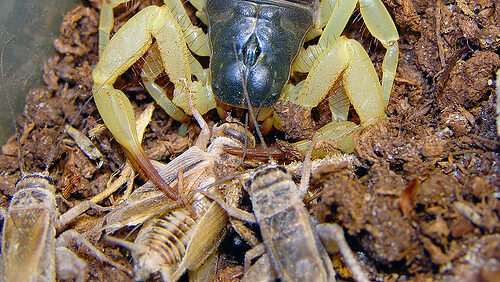
Dusting feeder insects with vitamin and mineral supplements provides essential micronutrients that may be absent even from gut-loaded insects, particularly for reptiles and amphibians with specific requirements. The process involves placing feeders in a plastic bag or container with a small amount of supplement powder and gently shaking until they’re lightly coated, ideally immediately before feeding to prevent the insects from grooming off the powder. For reptiles, calcium supplements (with or without vitamin D3 depending on UVB exposure) typically form the foundation of dusting regimens, while multivitamins containing vitamin A, E, and B complex are used less frequently to prevent overdosing. Tarantulas generally require less supplementation than vertebrate pets, though some keepers occasionally dust feeders for gravid females or specimens recovering from difficult molts. The frequency of dusting varies by species and life stage—growing juveniles and breeding females typically require more frequent supplementation than adult males or non-reproductive specimens.
Safely Introducing Feeders to Your Pets
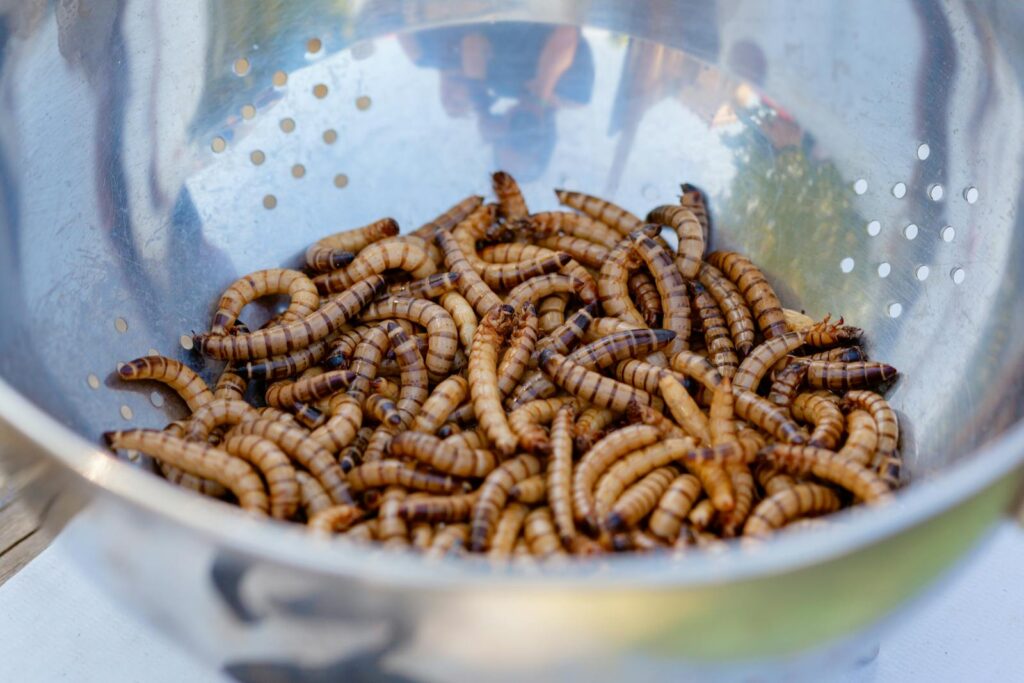
The method of presenting feeder insects can significantly impact both your pet’s safety and their feeding success rate. For tarantulas, feeder insects should never be larger than the tarantula’s abdomen, and during vulnerable periods like pre-molt or post-molt, all feeders should be removed from the enclosure to prevent injury to the defenseless arachnid. Techniques like pre-killing or stunning larger insects by refrigerating them briefly or crushing their heads prevents them from harming vulnerable pets while still providing the nutritional benefits. For reptiles that hunt by movement, tong-feeding can direct their attention to appropriate prey and prevent substrate ingestion during enthusiastic feeding responses. Specialized feeding dishes with smooth, high walls can contain insects like mealworms while allowing access to the pet, preventing feeders from burrowing into substrate or escaping the enclosure. Always supervise feeding sessions, particularly with new or unfamiliar prey items, and remove uneaten live insects after 24 hours to prevent stress or potential injury to your pet.
Breeding Feeder Insects: Sustainability and Cost Savings
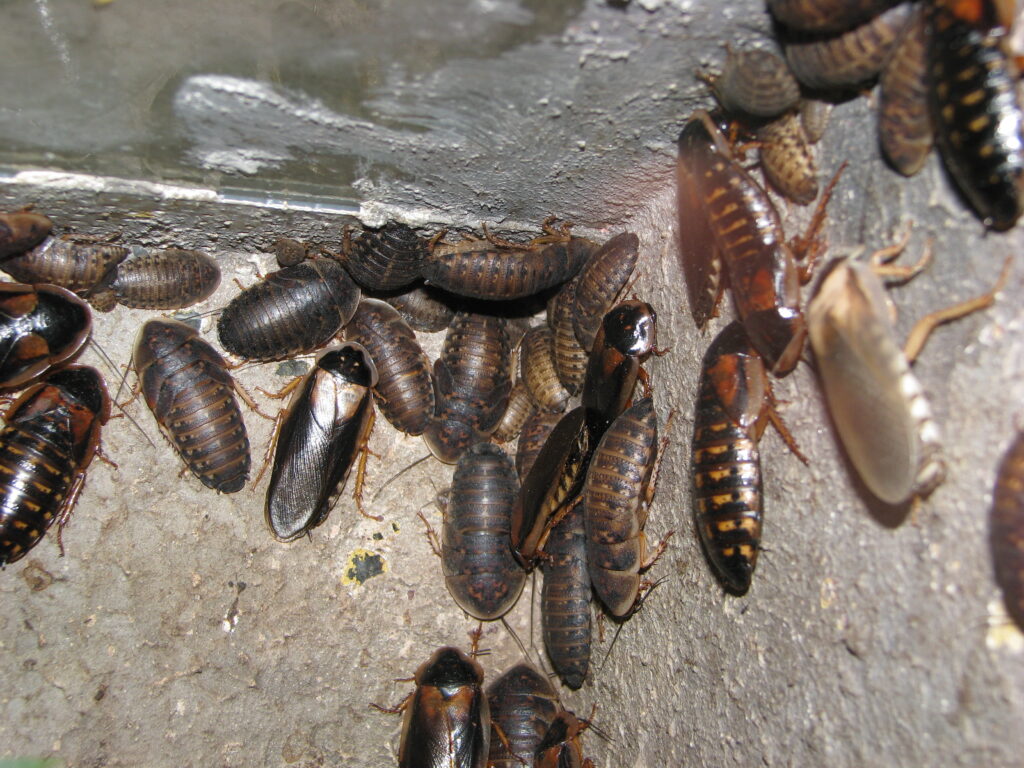
Establishing home breeding colonies of feeder insects represents both an economical approach to exotic pet keeping and a way to ensure consistent quality control over your pets’ nutrition. Dubia roaches offer perhaps the most approachable breeding project for beginners—they reproduce relatively slowly, preventing population explosions, require simple housing (plastic tubs with egg crate for hiding), and thrive on a diet of fresh vegetables and commercial roach chow. Cricket breeding requires more specialized setups including egg-laying substrate and careful temperature control, but can produce hundreds of offspring weekly for larger collections. For those maintaining only a few small pets, fruit fly cultures provide continuous harvests with minimal space requirements and equipment costs. Beyond cost savings, home breeding allows keepers to control the insects’ diet through consistent gut-loading practices, eliminate exposure to pesticides sometimes found in commercial operations, and reduce the carbon footprint associated with frequent shipments from suppliers. Successful breeding projects can eventually produce surplus feeders that can be sold or traded with other hobbyists, further offsetting the costs of exotic pet keeping.
Conclusion: Creating a Balanced Feeding Strategy
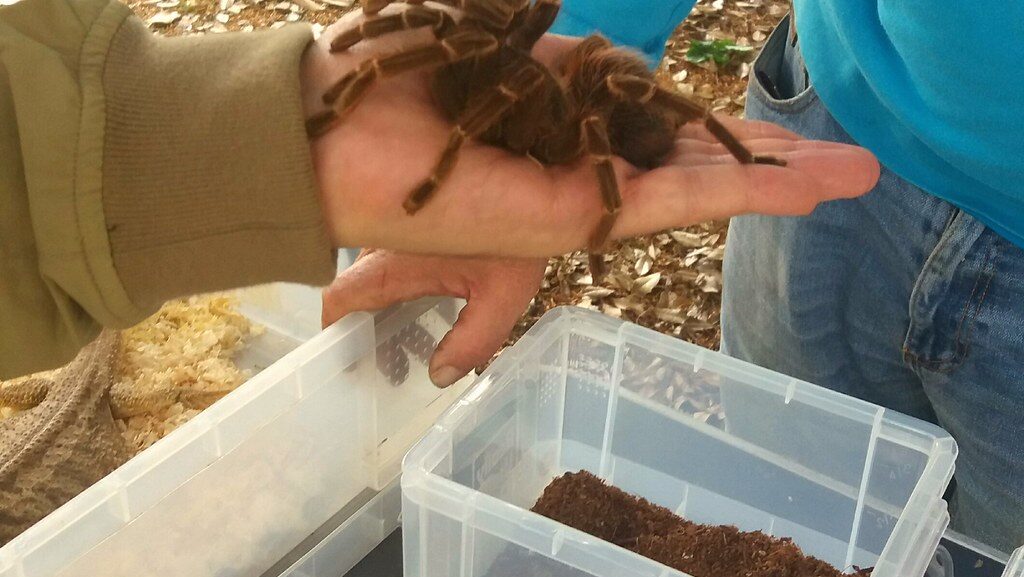
The optimal approach to feeding exotic pets involves developing a diverse rotation of appropriate feeder insects rather than relying on a single type. This variety not only ensures a more complete nutritional profile but also provides behavioral enrichment through different movement patterns, sizes, and hunting challenges. Consider your specific pet’s natural diet, size requirements, and any species-specific nutritional needs when developing your feeding strategy. For tarantulas, a foundation of appropriately-sized crickets or roaches supplemented occasionally with other feeders typically provides excellent results, while reptiles benefit from carefully calculated rotations focusing on calcium-rich options like BSFL alongside gut-loaded staples. Remember that even the highest quality feeders become nutritionally incomplete when offered exclusively, making variety the cornerstone of responsible exotic pet nutrition. By combining knowledge of feeder insects with proper preparation techniques and species-appropriate scheduling, you create the foundation for your exotic pet’s long-term health, natural behaviors, and overall thriving in captivity.

